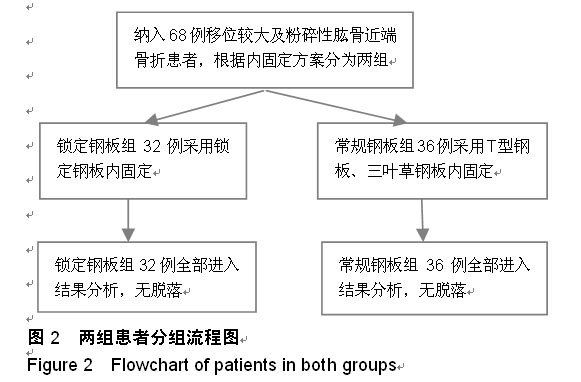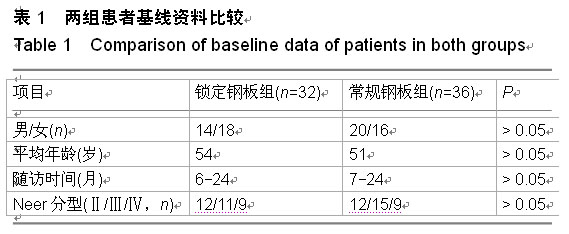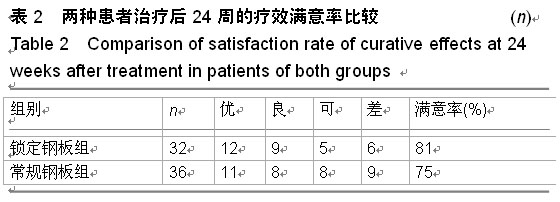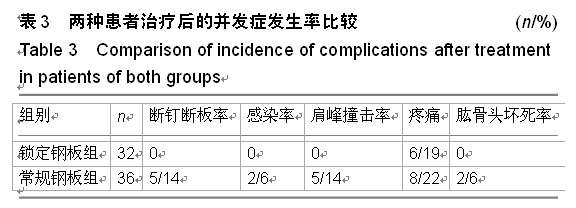| [1] 王冠军,张春才,许硕贵.肱骨近端骨折的治疗进展[J].外国医学.骨科学分册,2004,25(4):216-218.
[2] Neer CS. Four-segment classification of proximal humeralfractures:purpose and reliable use. Shoulder Elbow Surg. 2002;11(4):389-400.
[3] Wijgman AJ,Roolker W, Patt TW,et al. Open reduction and internal fixation of three and four-part fractures of the proximal part of the humerus. J Bone joint surg Am. 2002;84(11): 1919-1925.
[4] Pehlivan O,Yilmaz S,Kiral A,et al. [Evaluation of biomechanical rigidity of K-wire configurations in transverse osteotomies: a comparison of four-point bending test results]. Acta Orthop Traumatol Ture. 2003;37(5):395-399.
[5] Raissadat K,Struben PJ,van Loon CJ. Helix wire osteosynthesis for proximal humeral fractures: unacceptable nonunion rate in two- and three-part fractures. Arch orthop Trauma Surg. 2004;124(3):166-168.
[6] Bathis H, Tingarl M,Bouillon B,et al.Surgicaltratment of proximal humeral fractures is the T-plate still adequate steeosynthesis procedure. Zentralbl Chir. 2001;126:211-216.
[7] 张磊,杨海涛,曹前来,等.锁定钢板与常规手术治疗肱骨近端骨折疗效比较[J].中华矫形外科杂志,2004,12(10):728-731.
[8] Ring D.Current concepts in plate and screw fixation of Osteoporotic proximal humerus fractures. Injury. 2007;38 (Suppl 3):59-68.
[9] Nho SJ,Brophy RH,Barker JU,et al.Management of proximal humeral fractures based on current literature. J BoneJoint Surg(Am). 2007;89(Suppl 3):44-58.
[10] Voigt C,Hurschler C,Rech L,et al.Additive fiber cerclages inp roximal humeral fractures stabilized by locking plates. Acta Orthop. 2009;33(1):127.
[11] Papadopoulos P,Karataglis D,Stavridis SJ,et al. Mid-termresults of internal fixation of proximal humeral fractures withthe Philos pate.Injury. 2009; 40(12):1292-1296.
[12] 文良元,薛庆云,黄公怡,等.老年肱骨近端骨折的内固定治疗[J].中华骨科杂志,2004,24(11):641-644.
[13] 侯之启,陈铭,戈涛,等.MIPPO技术LCP钢板内固定治疗老年肱骨近端骨折[J].骨与关节损伤杂志,2004,19(11):736-738.
[14] Friedman RJ. Humeral technique in total shoulder arthroplasty. Orthop Clin North Am. 1998;29(3):393-402.
[15] Prakash U,McGurty DW,Dent JA. Hemiarthroplasty for severe fractures of the proximal humerus. J Shouder Elbow Surg. 2002;11(5):428-430.
[16] Owsley KC,Gorczyca JT.Fracture displacement and screw cutout after open reduction and locked plate fixation of proximal humeral fractures. J Bone Joint Sur Am. 2008;90(2): 233-240.
[17] Yang P, Zhang Y, Liu J, et al. Biomechanical effect of medial cortical support and medial screw support on locking plate fixation in proximal humeral fractures with a medial gap: a finite element analysis. Acta Orthop Traumatol Turc. 2015; 49(2):203-209.
[18] Sano H, Kamimura M, Oizumi A, et al. Secondary subacromial impingement after valgus closing-wedge osteotomy for proximal humerus varus.Case Rep Orthop. 2015;2015:652096.
[19] Chiewchantanakit S, Tangsripong P. Locking plate fixation of proximal humeral fracture: minimally invasive vs. standard delto-pectoral approach. J Med Assoc Thai. 2015;98(2): 196-200.
[20] Königshausen M, Thierbach A, Kübler L, et al.[Surgical treatment of 3- and 4-part fractures of the humeral head using a polyaxial-locking plate: results and patient satisfaction]. Z Orthop Unfall. 2015;153(1):51-58.
[21] Zhang F, Zhu L, Yang D, et al. Comparison between the spatial subchondral support plate and the proximal humeral locking plate in the treatment of unstable proximal humeral fractures. Int Orthop. 2015;39(6):1167-1173.
[22] Schliemann B, Hartensuer R, Koch T, et al. Treatment of proximal humerus fractures with a CFR-PEEK plate: 2-year results of a prospective study and comparison to fixation with a conventional locking plate. J Shoulder Elbow Surg. 2015. pii: S1058-2746(15)00014-2.
[23] Liu K, Liu PC, Liu R, et al. Advantage of minimally invasive lateral approach relative to conventional deltopectoral approach for treatment of proximal humerus fractures. Med Sci Monit. 2015;21:496-504.
[24] Dai ZS, Huang JM, Zhuang XR, et al.[Case-control study on suture-assisted locking plate for the treatment of proximal humeral fractures in elderly]. Zhongguo Gu Shang. 2014; 27(12):1015-1018.
[25] Hinds RM, Garner MR, Tran WH, et al. Geriatric proximal humeral fracture patients show similar clinical outcomes to non-geriatric patients after osteosynthesis with endosteal fibular strut allograft augmentation. J Shoulder Elbow Surg. 2015;24(6):889-896.
[26] Erasmo R, Guerra G, Guerra L.Fractures and fracture-dislocations of the proximal humerus: A retrospective analysis of 82 cases treated with the Philos(®) locking plate. Injury. 2014;45 Suppl 6:S43-48.
[27] Boudard G, Pomares G, Milin L, et al. Locking plate fixation versus antegrade nailing of 3- and 4-part proximal humerus fractures in patients without osteoporosis. Comparative retrospective study of 63 cases. Orthop Traumatol Surg Res. 2014;100(8):917-924. |




.jpg)